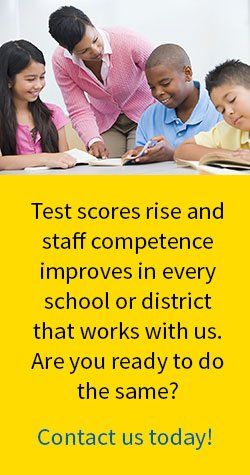Organizational Audit
Taking a Good Look at Ourselves!
Each EdFOCUS audit is a thorough and objective description of the current status of a school operation in comparison to the intended status. EdFOCUS identifies the discrepancy between the two, and this gap analysis provides a road-map for what needs to be addressed. These audits are planned with district staff to match the context of its particular circumstances. An audit could target the entire district, specific grade levels, or an individual building. The data collected include on-site interviews, observations, and review of key documents.
The final report for each audit documents findings, cites commendations, and makes recommendations – all to reduce or eliminate the identified “gaps” between the desired and actual status. Although EdFOCUS has a set of protocols for several types of audits, a combination of audits is often requested.
-
THE OPERATIONS AUDIT
The Operations Audit is an examination of the district organization and infrastructure and the extent to which it supports continuous improvement. Although customized to the district needs, this audit typically looks at:
- organizational structures
- staffing
- schedules
- support systems
- leadership teams
- job descriptions
- professional development programs
- enrollment management and student services
- district and school climate and culture
- communication systems
- the procurement and use of resources
- monitoring and appraisal practices
- relevant Board Policies and Procedures
-
THE CURRICULUM AUDIT
The Curriculum Audit is an examination of what is taught in classrooms at each grade level; although customized to district needs, this audit typically looks at:
- the extent to which the adopted curriculum is actually the enacted curriculum
- the alignment between the adopted curriculum and state content standards—including a provision for 21st century skills
- valid content and the accurate level of cognitive demand, including higher-order thinking
- learning outcomes that require students to construct meaning for themselves, and apply their learning to real-world contexts
- interdisciplinary connections
- the inclusion of art, media, and technology
-
THE INSTRUCTIONAL AUDIT
The Instructional Audit (an Audit of Classroom Practices) is an examination of classroom instruction to determine how it is delivered and assessed; although customized to district needs, this audit typically looks at:
- the planning, delivery, and assessment of classroom instruction
- the consistent use of “best practices,” including congruence among the learning outcome, teaching strategy, and assessments
- planning for differentiation from the outset, rather than after-the-fact
- the inclusion of RTI—provision for Tiers I and II intervention
- the level of student engagement
- the students’ construction of meaning
- the use of real-world contexts rather than learning in isolation
- the use of projects, problem-solving, and other performance tasks to demonstrate mastery
-
THE LITERACY AUDIT
The Literacy Audit is an examination of Literacy practices in grades 6-12, Science, Social Studies, ELA, and Math; although customized to district needs, this audit typically looks at:
- the extent to which the Literacy skills have been adopted into the Science, Social Studies, and Math courses at grades 6-12, and are actually being included in classroom instruction
- the coordination of the Literacy skills in these content subjects with the English/Language Arts department in each respective course and grade level—particularly in:
-the requirements for Informative and Argumentative Research writing
-the strategic choice of informational texts
- how the Literacy program is being monitored for effectiveness
-
THE ASSESSMENT AUDIT
The Assessment Audit is an examination of the district’s testing program—including what tests are given, to whom, when, and how the results are used; although customized to district needs, this audit typically looks at:
- the reasonableness of the testing schedule—is there too much testing?
- the use of high-stakes test results to make decisions about curriculum and instruction
- the use of district-level benchmark assessments to continuously monitor student performance
- the validity and appropriateness of classroom tests—including the use of paper-pencil tests that parallel the state’s high-stakes assessments
- the use of valid authentic and performance assessments
Close Your School’s Student Mastery Gap
Take the Self-Assessment
- All Ohio school districts are required to provide instruction so students can pass the Ohio State Tests (OST).
- When students fail to pass the OST tests, it reflects negatively on the school and the district as a whole.
Schedule a Consultation
- The EdFOCUS materials are written exclusively to the Ohio Standards and address the underlying level of thinking required for mastery.
- EdFOCUS materials are directly connected to the standards.
Improve Outcomes
- Classroom instruction is made more effective.
- District OST scores reflect mastery of content standards which generates public support and increases the state ranking.
Test scores rise and staff competence improves in every school or district that works with EdFOCUS.
Is your district ready to improve?
Contact Us
Is your school or district ready to improve student achievement?
Contact the EdFOCUS team today at (330) 842-0742.
©2023 EdFOCUS Initiative | Site Map | Privacy Policy | Accessibility

